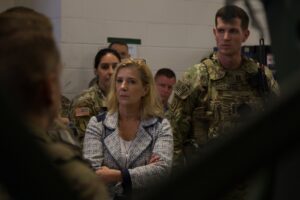
The Army will use results from Project Convergence (PC) to inform funding decisions for its modernization programs, the service’s secretary said Wednesday, noting that senior leaders face “hard choices” ahead in a likely flat budget environment. Army Secretary Christine Wormuth told reporters at the conclusion of the six week-long PC ‘21 demonstration that the latest iteration of the event particularly highlighted the need to resource foundational capabilities for networking and assured position, navigation and timing (PNT). “We do need to…

 By
By 











